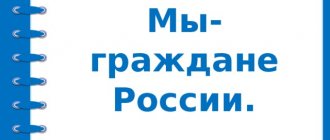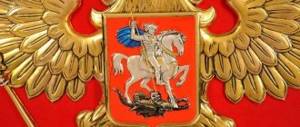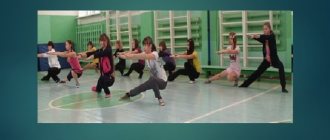Symbols of Russia for elementary school
The education and training program for elementary school students includes tasks for studying the symbols of Russia, namely: the flag and coat of arms of the motherland, the melody and words of the national anthem.
If in kindergarten children superficially study the symbols of the country, then in the first grade they become more deeply acquainted with the meaning of the coat of arms and ensign, and learn the words of the anthem by heart. During the study, children realize the importance of the functions of state symbols and learn to feel proud of being a citizen of the Russian Federation.
It is especially important to teach the symbolic meaning of the coat of arms and flag, because they have excellent potential for the spiritual and moral education of children. And what is important here is not the fact of memorizing the appearance of the symbols, but their significance for every resident of the country. For example, when studying the flag, children learn that the white stripe on the flag represents nobility, the red stripe represents love and courage, and the blue stripe represents loyalty. When talking with children about the flag, you need to try to explain to them that the people of Russia are distinguished by their friendship, courage and love for their homeland.
The coat of arms of Russia has multifaceted meaning. The golden double-headed eagle represents two ancient Russian symbols - the sun and the solar chariot - which are found on embroidered shirts, women's clothing, and towels of our ancestors. In the deep understanding of the coat of arms, the double-headed eagle is the guardian of our borders.
They begin to teach the Russian anthem from the first grades, presenting it to children as a symbol of national unity. It sounds solemnly at every school event and celebration.
Presentation for preschoolers of the senior and preparatory groups “Russia is my homeland.”
Description of the presentation by individual slides:
Slide no. 1
Russia - My Motherland Teacher of the MDOU Polovinsky kindergarten “Berezka” Ivanova Lyubov Viktorovna
Slide No. 2 Slide description:
Homeland is a synonym for the word Fatherland, the place where a person was born, as well as the country in which he was born and to the fate of which he feels his spiritual involvement and the place where the ancestors, the roots of a person, came from. Every person living on our planet feels a sense of pride in their homeland, their people and country, their land and its history. And its symbols represent the native land.
Slide No. 3 Slide description:
The concept of coat of arms comes from the German word “inheritance or inheritance” and is a sign of distinction, the most important emblem of a state, city, region, as well as individuals and families. The State Emblem of the Russian Federation was adopted in December 2000.
Slide No. 4 Slide description:
The flag is one of the most important symbols of our Motherland. The flag flies proudly day and night over the Grand Kremlin Palace. The Law on the State Flag was adopted in December 2000. It has become a good tradition to solemnly celebrate August 21 as the Day of the State Flag of the Russian Federation.
Slide No. 5 Slide description:
A hymn is a solemn song performed on special, most important occasions. Each state has its own anthem. The anthem is a song dedicated to its homeland, it is a symbol of the state, the same as the coat of arms and flag. The anthem glorifies the power and greatness of our country.
Slide No. 6 Slide description:
Our country has a long history. Russia was called by different names: Kievan Rus, Muscovy, Russian Empire, Russian Soviet Federative Socialist Republic, Soviet Union. But at all times, no matter what our Motherland was called, it could be proud of its glorious sons - warriors, statesmen, workers, peasants, writers, artists, musicians.
Slide No. 7 Slide description:
Russia is a multinational country, therefore it is divided into federal republics, autonomous territories and districts. Almost two hundred different peoples, large and small, live in them. They are all called Russians.
They should all live together because they have one country. Unfortunately, it often happens differently. But I hope that by the time I grow up, the quarrels between peoples in my country will stop.
Slide no. 8
More details infourok.ru
Presentation of symbols of Russia, school of Russia
What is the purpose of introducing children at school to the symbols of the country? This is a holistic and systematic approach to the study and popularization of symbols through lessons, themed concerts and public events as part of the school curriculum. They discuss with children why state symbols are so important, help them understand what feelings they evoke, as well as what ideological meaning they bring to the younger generation.
An up-to-date presentation for the lesson on the topic: “State symbols of Russia” will help you understand these issues and consolidate your knowledge.
"Russia is my homeland!"
Dear Colleagues!
Getting to know your native country, its culture and traditions, and the peoples inhabiting Russia is an important task facing educators.
I present to your attention the presentation “My Motherland is Russia! » The presentation can be used as illustrative material for a conversation about Russia or as part of a lesson. The presentation is divided into several parts: “Nature of Russia”, “Peoples of Russia”, “Moscow is the capital of our Motherland”, “State symbols of Russia”. Thus, this manual can be used not in one, but in several classes, depending on the goals. .
The presentation is set up automatically.
Dear colleagues, I will be interested to know your opinion.
Attached files:
| moja-rodina-rosija_5eleb.ppt | 2344.5 KB | Downloads: 2648 |
www.maam.ru
Symbols of the Russian state for children
Consistent historical and patriotic education of children at school is one of the most important priorities of any school. The active work of teachers in this direction pursues a single goal - the correct formation of patriotism, respect for the homeland and a sense of national pride.
The educational slide films “Symbols of Russia” will tell you how to interest and educate schoolchildren on this topic:
Symbols of Russia in kindergarten, symbols of Russia for preschool children
In kindergarten, introductory lessons are held for preschoolers on the topic “Symbols of Russia.” The purpose of such classes is to introduce children to state symbols, tell their history and significance for every resident of the country.
During the lesson, children are given a general explanation of the meaning of symbols. They try to instill in preschoolers a sense of pride and admiration for these symbols of the country. Additionally, children are introduced to other symbols of the state - the constitution, the president, and public holidays.
The most accessible and interesting way to convey information to children is a laconic presentation, an interesting lesson in the form of a game, or placing visual aids in kindergarten - stands with symbols.
History of the Russian flag for children
First flags
Every person should know the symbols of their state. People begin to study the history of their country’s flag in school, so that in adult life they can understand and honor its symbolic meaning.
The origin of the flag is an interesting story dating back to ancient times. The very first analogues of flags were called banners
, and they were strikingly different from modern symbols of the state.
The word “banner” itself is derived from the phrase “to pull together,” that is, to gather warriors into one team .
The state banner in Russia was a fabric decorated with religious symbols or biblical heroes. First real flag
appeared during the reign of
Alexei Mikhailovich in the 17th century.
He decorated the top of the first
warship, the Eagle
. A large banner of three colors - white, red and blue - rose into the sky above the waves. It is not known for certain in what order the colors were located, and what exactly the flag looked like. Unfortunately, no images have been preserved. But, from that time on, Alexey Mikhailovich gave orders to sew new tricolor banners with a gilded double-headed eagle.
Perhaps the idea of the flag was taken from the Dutch. When the king needed to install a flag on the ship, he decided to ask the Dutch sailors for advice. In response, they simply showed him their banner. Perhaps Alexey Mikhailovich did not take into account that the colors and images may be different and simply repeated the shades of the Dutch flag.
From Peter I to Nicholas II
Peter I also liked the new banner; he installed it on his ships and yachts. Therefore, the flag at first belonged only to the navy and merchant fleet. The banner was called “flag of the Tsar of Moscow.”
IN 1865
Alexander II
established new
colors for the flag - black, white and gold.
In April
1883
, Tsar Alexander III abolished the previous colors and returned the version of Peter I. Shortly before the coronation,
Nicholas II officially recognized Peter the Great's flag as the state flag. The tricolor lasted until 1917
.
And after the October coup, the Russian flag became simply a red banner with a hammer and sickle.
The red flag symbolized revolution. Meaning of the tricolor
Each color of the modern flag has its own symbolism. White color
shows purity of thoughts, peace, sincerity and nobility.
Blue
– truth, loyalty and impeccability.
Red
– courage and blood shed by soldiers while defending their native land. These colors were revered in Rus' in ancient times. Mentions of them are preserved in fairy tales and epics, for example, “the red maiden,” “the blue sea,” and “the white light.”
The colors of the flag in Tsarist times were attributed the following meaning: white was the color of independence and the Orthodox faith, blue was considered the color of the Virgin Mary defending Russia and Tsarist rule, and red was the color of the Russian people. The three colors denoted the unity of religious faith, royal power and the strength of the people.
According to one version, colors used to symbolize the trinity of the largest historical regions
: Little Rus' (part of Ukraine), White Rus' (Belarus) and Great Rus' (Russia).
There are many different versions of the interpretation of the colors of the flag. One thing is clear: at different times, the meanings of colors were revealed in different ways.
New history of the Russian flag
The collapse of the USSR affected the appearance of the state flag - the red fabric was abolished. In August
1991
,
the traditional tricolor flew into the sky.
The flag, approved in
1991
, was slightly different from the current canvas, the red color on it was scarlet and the blue was azure.
The traditional colors blue and red began to be used already in 1993
, by order of
Boris Yeltsin.
August
22 , Russia
celebrates Russian Flag Day. On this day, a new Constitution was adopted with a new law on the flag.




